New pistols chambered for the 380 ACP continue to flow out of factories because these generally smaller handguns feature reduced recoil firing the 9mm Kurz or 9mm Short, two other dimensionally accurate names for the 380 Auto cartridge. The 380’s case is about 2mm shorter than the popular 9mm Luger case, though their bullet diameters are the same. The advantage of chambering ammunition with a short overall length helps keep these guns concealable.

One, the Ruger LCP, has sold in greater numbers than perhaps any other modern 380 ACP pistol, and with good reason, if the results in this magazine are any guide. In the June 2008 issue, we tested a just-released LCP and gave it an A- grade, saying of it, “This gun did what it was designed to do. Perhaps the grips could be more effectively textured, but we’d hate to spoil its looks. The Ruger LCP may be limited in its application, but could prove invaluable in its service.” Head to head against the Kel-Tec P3AT, we said that Ruger had basically refined the Kel-Tec, in our view. The checkering on the slightly wider LCP grip frame was finer, which resulted in the Ruger jumping around in the hand more than the Kel-Tec. In that first look eight years ago, we narrowly preferred the Kel-Tec. Then in 2009, Ruger issued a recall for the LCP because the company had received a small number of reports that the gun, “…can discharge when dropped onto a hard surface with a round in the chamber.” The company offered a retrofit of a different hammer mechanism to cure the problem, which was offered at no charge to the customer, and the little gun kept on chugging. In the February 2013 issue, we tested a variant of the LCP, the Ruger LCP-LM No. 3718, which mashed together Ruger’s tiniest pistol with LaserMax’s trigger-guard laser sight. The laser was nicely integrated into the pistol. In that test, we noted, “the female tester in the group had a hard time racking the slide. As pistols get smaller they can be harder to use and operate.” We also said, “More seasoned testers did not like that the slide did not lock open on the last shot, like it did with the SIG P238 and Walther PK380.” That pistol earned a B+ grade, and Our Team Said, “The Ruger was the best choice for deep-conceal carry” in that test. Then in the October 2015 issue, we tested a Ruger LCP-C Custom No. 3740 against a Taurus Curve and gave the upgraded LCP-C an A grade, saying of it: “We found the Ruger LCP-C Custom to be reliable, accurate enough for personal defense, and compact enough for concealed carry and pocket carry. The sights and trigger are improvements over previous versions of the LCP. The Ruger’s footprint is smaller than the Taurus, but the Ruger is lighter and developed more energy.” So, clearly, this is a capable, consistent handgun that has survived nearly 10 years because of its merits — simple operation, light weight, reasonable shooting characteristics, and affordability.
Seeking to take some of the LCP’s market share, Remington officially introduced the RM380 Micro at the 2015 NRA Annual Meetings and Exhibits. The RM380 is a double-action-only pistol with second-strike capability. It operates from a delayed blowback action and has an aluminum frame. Remington produced an unusual marketing angle for the gun, claiming its slide-racking force was very low. That was something we asked the test team to evaluate in particular.
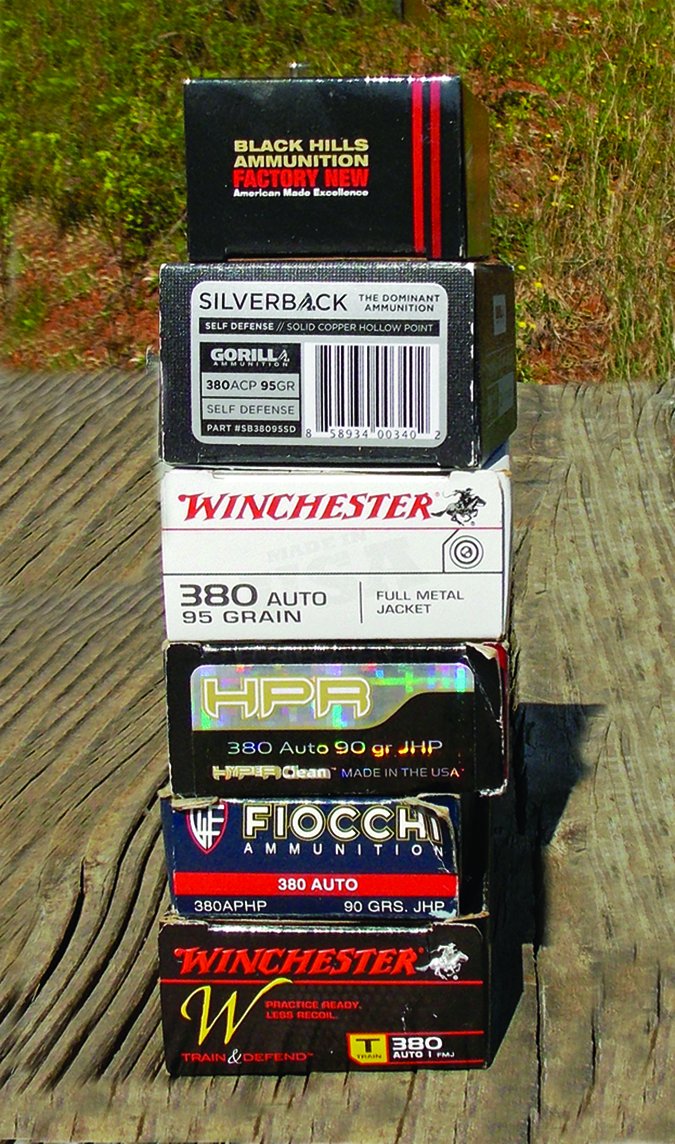
Also introduced at the 2015 NRA Annual Meetings & Exhibits in Nashville was Armscor’s Rock Island Armory Baby Rock 380 ACP 1911 51912, though it had been shown as a prototype as early as the summer of 2014. At introduction, Rock Island President and CEO Martin Tuason called the pistol a “mini 1911” and said it was a single-stack pistol with a seven-round magazine. We previously tested a similar concept (an 85% 1911) in Browning’s Black Label 1911-380 in the September 2015 issue, giving it a B ranking. Also in that test was the smaller, but still 1911-style Kimber Micro Carry Advocate Brown, which got an A- grade and was much better in the pocket.
While we conducted accuracy testing with our standard three loads, combat firing and initial break in was accomplished with six different loads. In order of use, they were: Winchester USA 95-grain FMJs ($40/100 @ LuckyGunner.com), HPR 90-grain JHPs ($28.75/50 @ LuckyGunner.com), Fiocchi Shooting Dynamics 90-grain JHPs ($15.19/50 @ ShootersGuide.com), Winchester Train & Defend 95-grain FMJs ($22/50 @ MidwayUSA.com), Gorilla Ammunition 95-grain JHPs ($28/20 @ Ableammo.com), and the Black Hills Ammunition 60-grain Xtreme Defense ($25.57/20 @ MidwayUSA.com).
380 ACP Range Data
| Black Hills 60-gr. Xtreme Defense | Rock Island Armory Baby Rock 51912 | Remington RM380 Micro 96454 | Ruger LCP 3701 |
| Average velocity | 1255 fps | 1237 fps | 1229 fps |
| Muzzle energy | 209 ft.-lbs. | 203 ft.-lbs. | 201 ft.-lbs. |
| Smallest group | 2 in. | 4.5 in. | 4.2 in. |
| Largest group | 2.8 in. | 5.5 in. | 4.7 in. |
| Average group | 2.4 in. | 5 in. | 4.4 in. |
| HPR 90-gr. JHP | |||
| Average velocity | 965 fps | 940 fps | 952 fps |
| Muzzle energy | 186 ft.-lbs. | 176 ft.-lbs. | 181 ft.-lbs. |
| Smallest group | 2.7 in. | 4.7 in. | 3.8 in. |
| Largest group | 3.6 in. | 6.3 in. | 5 in. |
| Average group | 3.2 in. | 5.3 in. | 4.5 in. |
| Fiocchi Shooting Dynamics 90-gr. JHP | |||
| Average velocity | 989 fps | 955 fps | 941 fps |
| Muzzle energy | 195 ft.-lbs. | 182 ft.-lbs. | 176 ft.-lbs. |
| Smallest group | 2.3 in. | 5.5 in. | 3.9 in. |
| Largest group | 3.2 in. | 6.5 in. | 4.6 in. |
| Average group | 2.8 in. | 6 in. | 4.3 in. |
| To collect accuracy data at 15 yards, we fired five-shot groups off a solid bench rest. We recorded velocities with a Shooting Chrony Master Chronograph. The first sky screen was set 10 feet from the muzzle. | |||
Initial firing was done with Winchester FMJ loads, then we poured more than 100 rounds through each pistol for reliability testing and during combat firing at 5, 7, and 10 yards. Here’s how the Ruger LCP, the Remington RM380, and Rock Island Baby Rock did:
Ruger LCP 3701 380 ACP, $229
GUN TESTS GRADE: B+
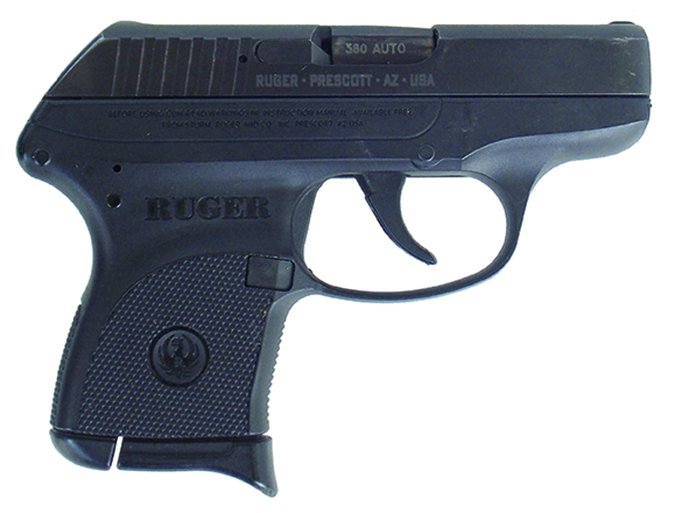
This is the basic LCP that’s coming up on its 10th anniversary soon. It’s a light handgun that is the smallest of the three pistols tested. We would have liked better sights, and would pay more for the LCP Custom, which has better sights and trigger. But the stock LCP has appeal to those with limited funds.
| ACTION | Semi-auto, locked breech double action |
| OVERALL LENGTH | 5.2 in. |
| OVERALL HEIGHT | 3.8 in. |
| MAX WIDTH | 0.82 in. |
| WEIGHT UNLOADED | 9.8 oz. |
| WEIGHT LOADED | 10.9 oz. |
| MAGAZINE | 6-rd. detachable box |
| BARREL | 2.75 in., 1:16 RH twist; 6 grooves, blued alloy steel |
| SLIDE | Blued alloy steel |
| GRIP FRAME | Black glass-filled nylon |
| FRAME FRONT STRAP HEIGHT | 1.25 in. |
| FRAME BACK STRAP HEIGHT | 2 in. |
| GRIP THICKNESS (max) | 0.8 in. |
| GRIP CIRCUMFERENCE (max) | 4.5 in. |
| SIGHTS | Integral |
| SIGHT RADIUS | 4.1 in. |
| TRIGGER PULL WEIGHT DOUBLE ACTION | 9.1 lbs. |
| TRIGGER SPAN | 2.5 in. |
| SAFETY | Firing pin block |
| WARRANTY | None written |
| WEBSITE | Ruger.com |
| TELEPHONE | (336) 949-5200 |
| CA APPROVED | No |
| MA APPROVED AND CERTIFIED | No |
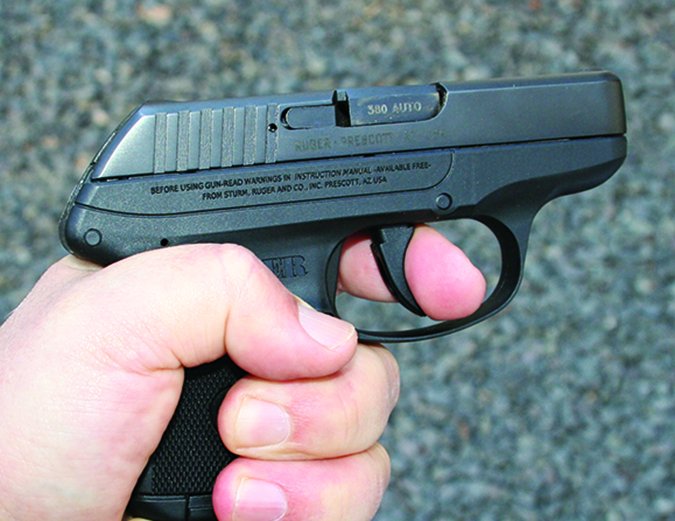
This was the list price of this pistol at BudsGunShop.com at the time of our test. The Ruger Lightweight Compact Pistol is a locked-breech semi-automatic pistol that holds 6+1 rounds and shares almost identical dimensions with the Kel-Tec P3AT. The Ruger LCP is familiar to many readers, so we’ll begin with it as the testbed for the new Remington and RIA pistols.

The Ruger’s steel slide rides low on a polymer frame. The pistol features a double-action-only trigger press of 9 pounds. The handle portion of the frame is pebbled for good adhesion, and the front strap is stippled. The rear strap is checkered at the bottom of the frame. The sights are small and snag free. There is an obtainable sight picture from a solid benchrest, but neither this pistol nor the Remington offers much in the way of a good sight picture even at modest range. The cocking serrations offer a good gripping surface for manipulation. The magazine release is positive. The pistol does not hold the slide open on the last shot, but there is a slide lock that may be manually engaged to keep the pistol open.
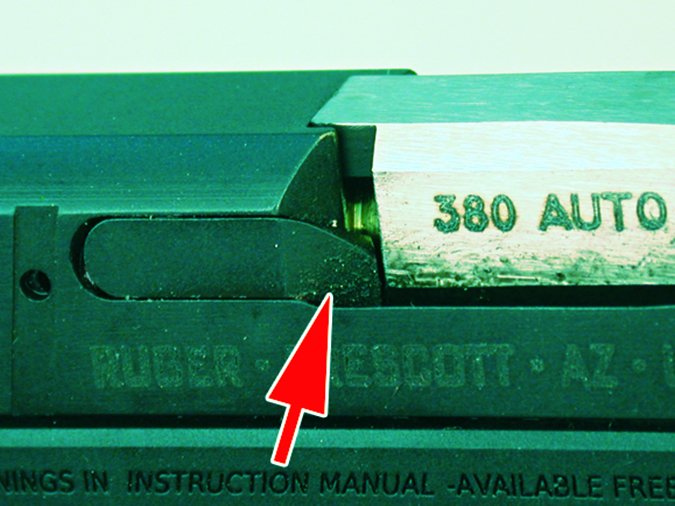
The pistol is neat, small, and recently Ruger has lowered the price. At $229, the Ruger is a proven pistol well worth its price. We would have been willing to pay $112 more had the Remington had significant improvements, and in fact the Remington does. A hold open for the last shot and an ambidextrous magazine release are nice to have. The grip feels slightly better. But the RM380’s sights are no better, in practical terms. So, after the dry fire and handling evaluation, we conducted combat firing drills. The Remington displayed no meaningful advantage over the Ruger in combat shooting. Also, there were no malfunctions of any type with the LCP.
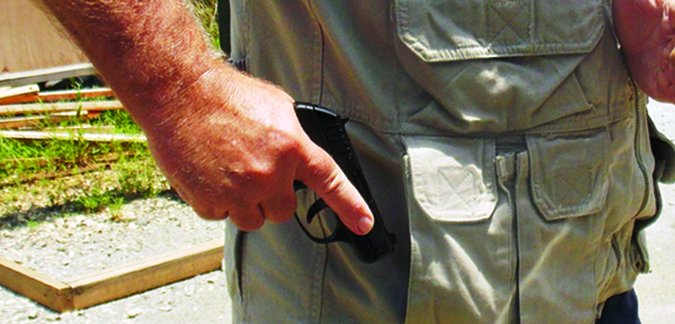
Before firing for accuracy, we often fire a test group to become familiar with the trigger and note any sharp edges. We fire several groups for record and submit the average. We had not noticed the stacking of the Remington trigger at the end of travel during combat drills, but the difference between the Remington and the Ruger trigger was noticeable in accuracy testing. The Ruger did a better job at 15 yards, with a best group of 3.8 inches fired with the HPR 90-grain rounds.
Our Team Said: The Ruger is reliable, but so are the other pistols. The Ruger is the most affordable pistol and yet gives up little to the Remington in combat shooting that we can detect. It is also the smallest pistol tested. All in, the Ruger is a Best Buy in affordable protection.
Remington RM380 Micro 96454 380 ACP, $341
GUN TESTS GRADE: B-
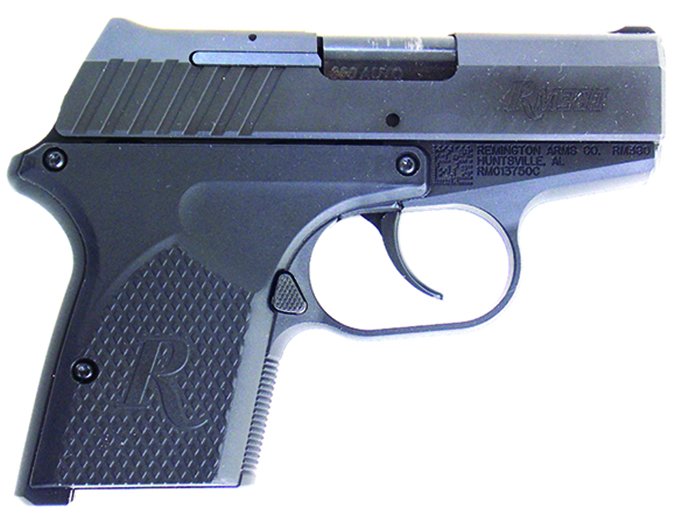
We really wanted to like the RM380, and, overall, we did. After a modest break in, the RM380 proved reliable, and we liked the ambidextrous magazine release and last-round hold-open features. The trigger was usable in rapid fire. What we did not like was heavy stacking of the trigger that was most noticeable in benchrest testing and poor accuracy. Sight regulation was also badly off.
| ACTION | Double action only, blowback |
| OVERALL LENGTH | 5.25 in. |
| OVERALL HEIGHT | 3.9 in. |
| MAX WIDTH | 0.95 in. |
| WEIGHT UNLOADED | 12 oz. |
| WEIGHT LOADED | 14.1 oz. |
| BARREL LENGTH | 2.9 in. |
| BARREL | Steel |
| MAGAZINE | 6-rd. detachable box |
| SLIDE | Steel |
| FRAME | Aluminum |
| FRAME FRONT STRAP HEIGHT | 1.5 in. |
| FRAME BACK STRAP HEIGHT | 2.5 in. |
| GRIPS | Synthetic |
| GRIP THICKNESS (max) | 0.9 in. |
| GRIP CIRCUMFERENCE (max) | 4.75 in. |
| SIGHTS | Fixed |
| TRIGGER PULL WEIGHT DOUBLE ACTION | 10.5 lbs. |
| TRIGGER SPAN DOUBLE ACTION | 2.6 in. |
| SAFETY | None |
| WARRANTY | Limited lifetime |
| WEBSITE | Remington.com |
| TELEPHONE | (800) 243-9700 |
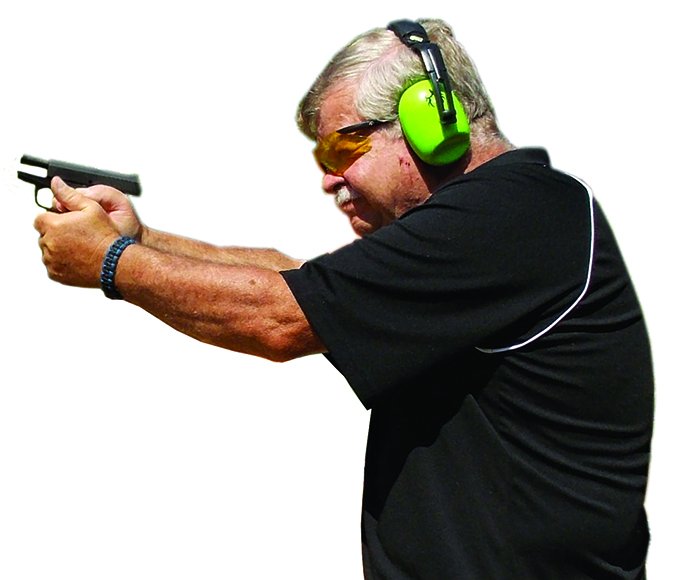
This is the first new pistol made at Remington’s new Huntsville, Alabama factory. Our test gun has an MSRP of $436, and the Crimson Trace Laser-equipped version lists for $638. The price above was a recent online quote from BudsGunShop.com.
The Remington RM380 is light and slim even for a 380 ACP pistol. It weighs only 12.1 ounces. The pistol is a single-stack magazine design, as are the other pistols. The RM380 pistol has a slightly extended grip tang that prevents the slide biting the hand, a common problem with 380 ACP pistols. The slide is steel with generous cocking serrations. The sights are more than bumps on the slide, but not as large as those on the RIA pistol. They are no larger than the Ruger LCP’s — barely adequate for close-range use — but snag free. The hammer rides in a recess in the slide without any type of protrusion. The barrel has a pronounced bell near the muzzle that mates it to the slide. There is some lateral motion of the slide when it is grasped; however, it isn’t loose enough to be called sloppy.
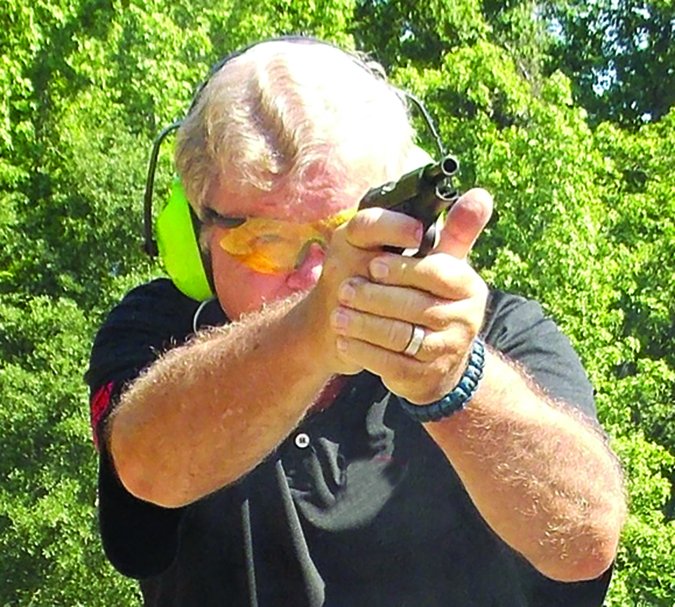
The frame is lightweight aluminum alloy. The anodizing is well done, matching the blued slide. The grips are removable. On either side of the grips are long finger grooves designed for either right- or left-hand use. These grooves slightly reduce trigger reach. A very nice touch all raters liked is the serrated front strap. This is well done, and, frankly, it’s a feature that seems above the modest price of the Remington RM380. The grips are lightly pebbled. Overall adhesion and abrasion cannot be faulted, our testers said.
The pistol’s double-action trigger breaks at 10 pounds. The trigger is smooth with modest stacking at the end. There are those who have stated that the trigger has no noticeable reset. This simply isn’t true, nor is a trigger without reset possible. The reset is faint, but detectable. When conducting high-speed drills, every shot must be fired with accuracy, not simply to see how quickly the magazine may be emptied. The proper high-speed technique is to ride the reset just to the reset and fire again. The RM380 allows this. The pistol is supplied with two 6-round mags, one with a modest finger rest.
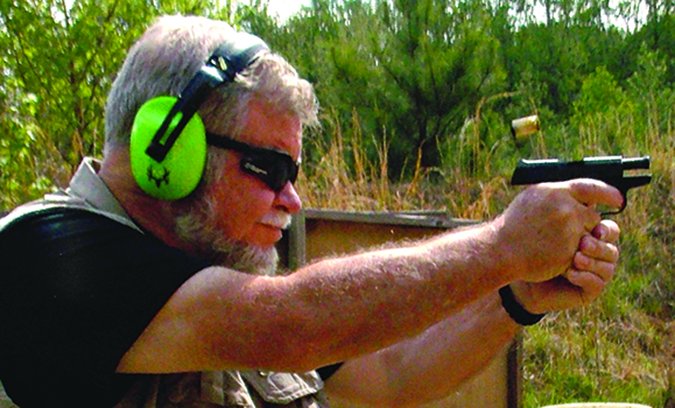
During the first two magazines, 12 rounds, the Remington failed to completely cycle three times. The pistol was properly lubricated. The pistol fired an additional 88 rounds of mixed loads with no malfunctions, so we marked the initial missteps down as a break-in malfunctions.
It was interesting that we expected the Remington to outpace the Ruger LCP due to the slightly longer grip. As it turned out, in combat shooting the Ruger gave up little to the Remington. The impression of larger sights on the Remington is more of a case of slide design than actual superiority to the Ruger. We liked the smooth trigger, and the ambidextrous magazine release was also an aid during firing and quickly reloading.
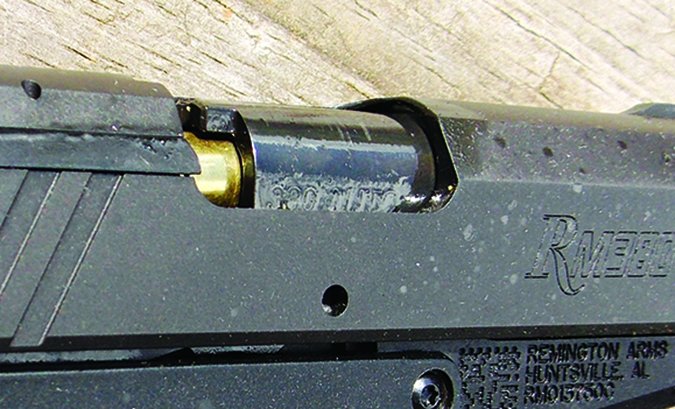
Firing for accuracy, we shot the Black Hills 60-grain Xtreme Defense, the HPR 90-grain JHP, and the Fiocchi 90-grain JHP. Accuracy firing was limited to 15 yards. Controlling a double-action-only trigger coupled with a gun with small sights and a 12-ounce weight isn’t conducive to accuracy. Despite the best efforts of experienced raters, the Remington gave a poor showing compared to the Ruger LCP, with its heavy trigger being one negative factor. Also, the RM380 fired 8 inches above the point of aim, on average, with each loading. Grouping was poor, we felt. So, we rated the pistol down a full grade on poor accuracy, and coupled with poor sight regulation, we rated the pistol down another half grade.
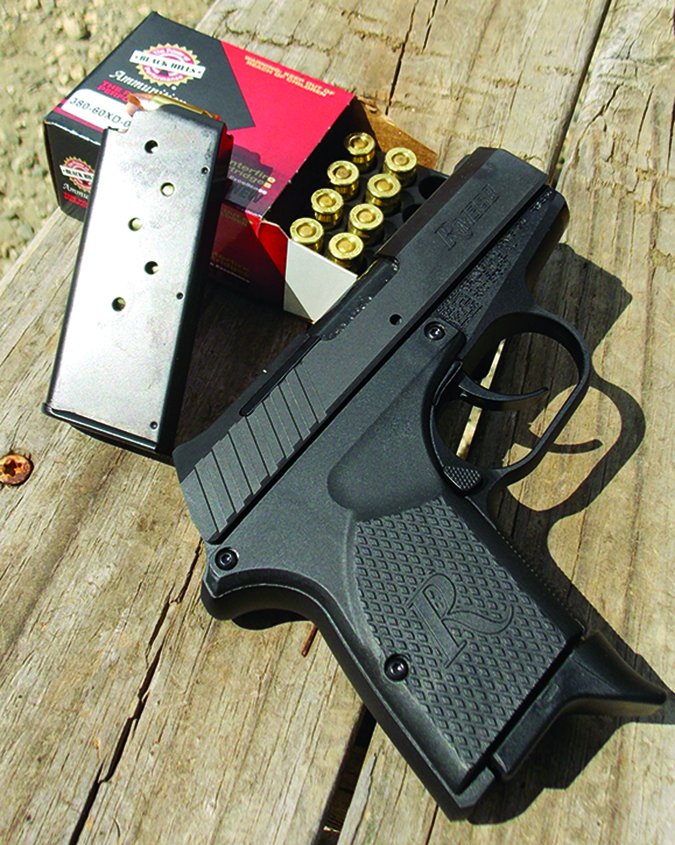
The editor asked the raters to take a hard look at the force required to rack each slide, as this is an important consideration for many shooters and something Remington is promoting as a plus for its pocket pistol. Slightly built individuals, those with arthritis (one rater), and the elderly may have difficulty racking a slide. In agreement with Remington’s claims, the RM380 was the easiest to rack, hands down. We could hold the slide in one hand and rack the pistol by moving the frame with one finger. One rater, with long fingers, could wrap his fingers over the slide and rack the pistol with one hand with the thumb on the backstrap. The LCP was not difficult to rack, but it was harder than the Remington. The RIA slide has plenty of leverage and isn’t any more difficult to rack than the LCP with the hammer cocked.
Our Team Said: The choice between the two DAO pistols seemed close until the accuracy run. We liked the Remington’s slightly longer grip, checkered front strap, ambidextrous safety, the fact that the slide locks open on the last shot, and that fact that the trigger may be cycled dry fire without racking the slide. But 15 yard accuracy with a best group of 5 inches was poor. A winner on every other count the pistol had to be rated down for accuracy.
Rock Island Baby Rock 51912 380 ACP, $356
GUN TESTS GRADE: A

The Baby Rock has a lot going for it. The only true demerit was a stiff slide-lock safety. This loosened up during testing, and the fact is, many will prefer a safety with a positive detent. Combat shooting gave good results. Accuracy was excellent for a pistol this size.
| ACTION | Single-action semi-auto; locked breech |
| OVERALL LENGTH | 6.6 in. |
| OVERALL HEIGHT | 4.6 in. |
| MAX WIDTH | 1.1 in. |
| WEIGHT UNLOADED | 22 oz. |
| WEIGHT LOADED | 24.1 oz. |
| BARREL LENGTH | 3.75 in. steel, 6 grooves, 1:16 twist |
| MAGAZINE | 7-rd. detachable box |
| SLIDE | Parkerized black steel, 3 front cuts; 5 rear cuts |
| FRAME | Parkerized black steel |
| FRAME FRONT STRAP HEIGHT | 2.3 in. |
| FRAME BACK STRAP HEIGHT | 2.8 in. |
| GRIPS | Checkered black polymer |
| GRIP THICKNESS (max) | 1.1 in. |
| GRIP CIRCUMFERENCE (max) | 4.6 in. |
| FRONT SIGHT | Serrated front blade, dovetail cut |
| REAR SIGHT | Two-dot low profile, dovetail cut |
| TRIGGER PULL WEIGHT | 4.5 lbs. |
| TRIGGER SPAN SINGLE ACTION | 2.25 in. |
| SAFETIES | Slide lock lever; grip |
| WARRANTY | Limited lifetime |
| TELEPHONE | (775) 537-1444 |
| WEBSITE | Armscor.com |
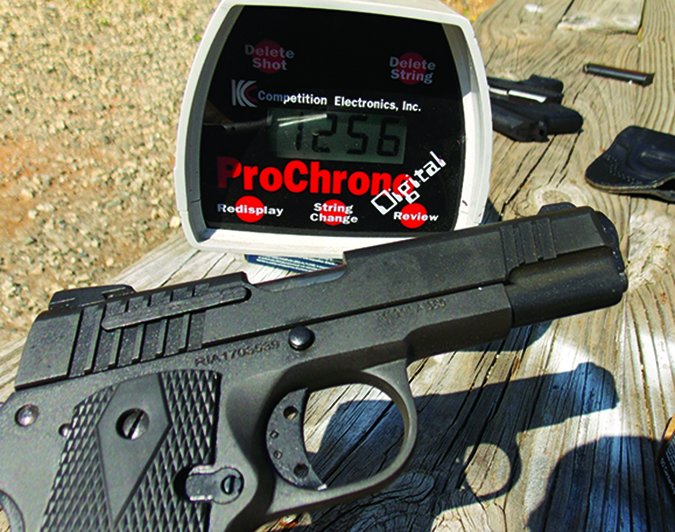
This was the counter price for an in-stock gun at TombstoneTactical.com. The Baby Rock is a 1911-like 380 ACP pistol. When we say 1911-like, many may compare the pistol to the Kimber 380 or the Browning 380 pistol previously tested. The Rock is longer than the Kimber and shorter than the Browning, not a bad place to be. The Rock is a true miniature 1911. The pistol features a plunger tube on the frame and also uses a grip safety, something the other small 1911 handguns do not. The slide is machined from steel. The extractor is an external type. The ejection port is generous. There are two sets of cocking serrations front and rear. The forward set is smaller but effective.
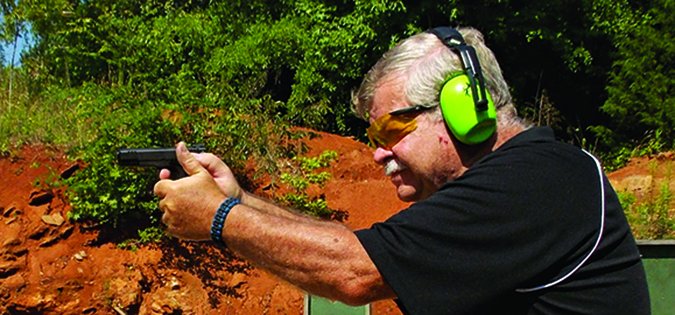
The sights are excellent for a small pistol. The front sight appears attached by a tiny set screw. The rear sight is dovetailed in place. These sights are useful for shooting to 25 yards or more. The slide lock and magazine release are 1911 types, positive in operation. The grip safety is a beavertail type we liked very much. The slide lock safety is positive in operation. The safety was never difficult to use, but it was stiff in operation when first manipulated. It became smoother in use. A definite click was heard when the safety was taken off. Our 1911 fans rated this as ideal.
The front strap is smooth with a slight recurve at the base. The rear strap features a grooved mainspring housing. The hammer is a steel skeletonized type. The trigger breaks cleanly at 4.5 pounds. Our raters felt that this trigger is as good a single-action trigger as we have felt from the factory. The pistol isn’t heavy, but at 22 ounces, it weighs almost as much as both of the other pistols tested put together.
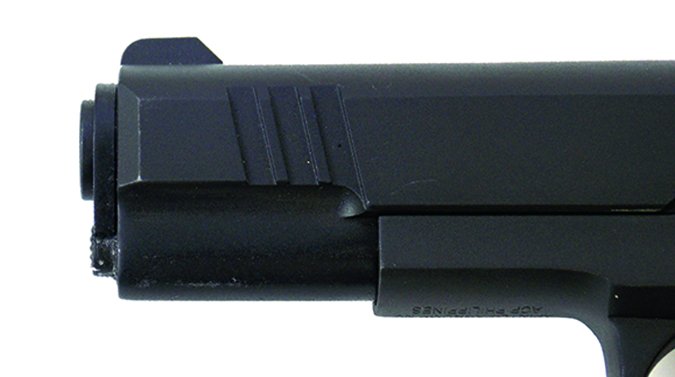
The pistol was lubricated and taken to the firing range. The Rock was supplied with a spare 7-round magazine. The Remington also is delivered with a spare magazine; the Ruger is not. The pistol was loaded with the same mix of ammunition the other handguns were fired with. In combat drills there were no malfunctions of any type. There were no break-in malfunctions as with the Remington, and the pistol fired 100 rounds of mixed ammunition without issue. In combat firing the pistol was far more accurate than either of the pocket pistols. At 5 yards, a smooth DAO trigger is good enough for center hits, but by the time you get to 10 yards, the heavier weight of this solid-feeling 380 and straight-to-the-rear trigger compression of the single-action lockwork are great advantages. The raters conducted fast-paced drills and rapid mag changes that were not possible with the DAOs.
One foible, and it was shooter induced. On two or three occasions, the rater did not fire when he meant to because the grip safety was not completely depressed. (And this is our 1911 fan!) Simple firing-grip adjustment and attention to detail quickly solved this issue.
In benchrest accuracy testing, the Rock walked away from the other handguns. The single best group was a 2.0-inch effort with the blistering hot Black Hills Ammunition 60-grain Xtreme Defense at 1250 fps. The Rock’s groups were half that of the Remington. The Baby Rock was by far the most comfortable pistol to fire from the benchrest.
Our Team Said: If you like cocked-and-locked carry, or even hammer down in the pocket, then you should make room for the Baby Rock, because it is quite a shooter. It only remains to be seen if production will meet demand.
Written and photographed by R. K. Campbell, using evaluations from Gun Tests team testers.



























